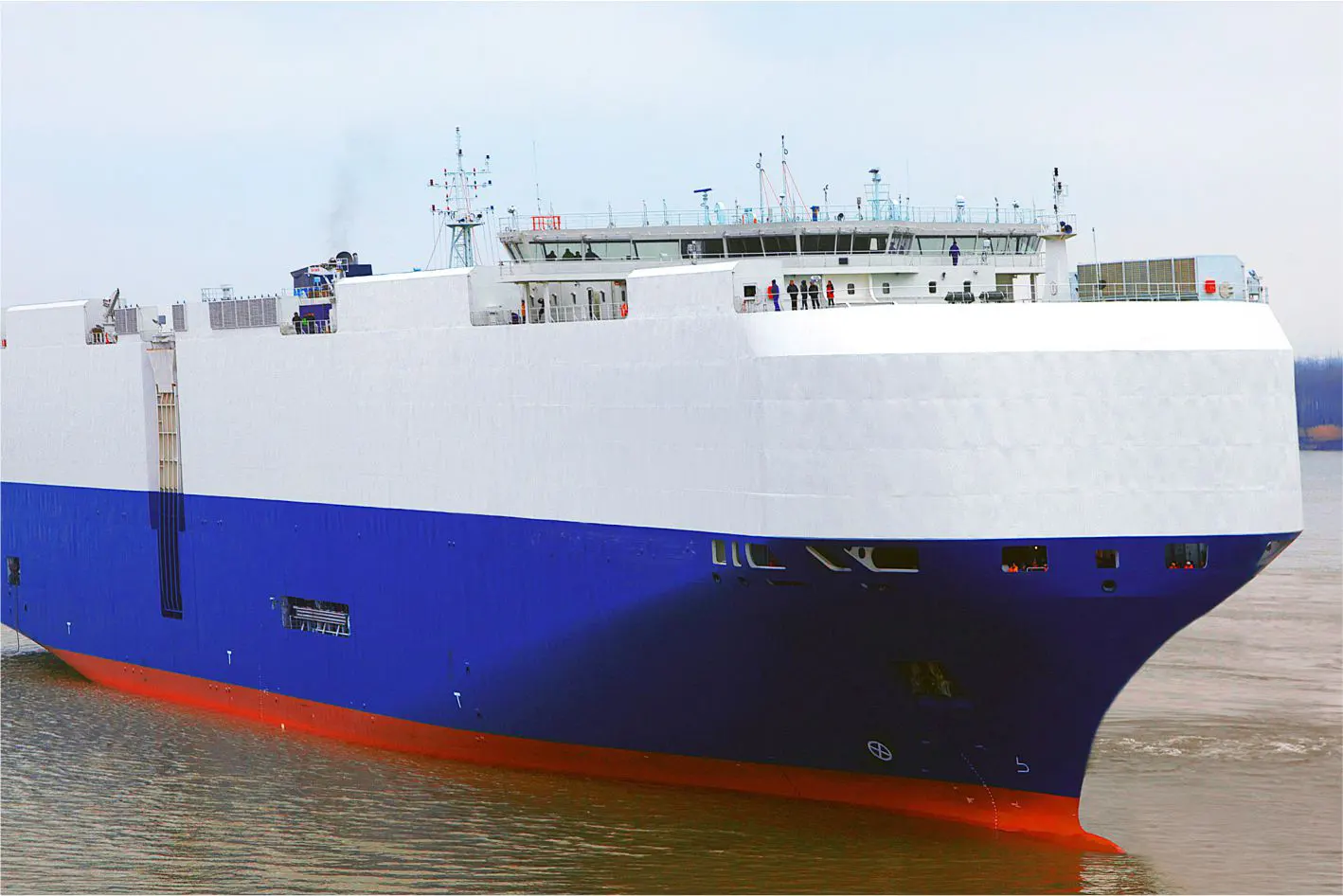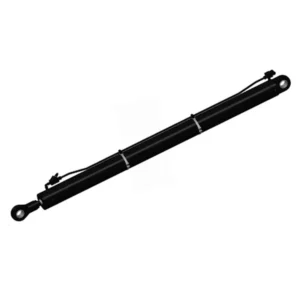Ro-ro Platform Main Operating Cylinder
Jako jeden z producentów, dostawców i eksporterów produktów mechanicznych, oferujemy cylindry hydrauliczne i wiele innych produktów.
Prosimy o kontakt w celu uzyskania szczegółowych informacji.
Poczta:sales@hydraulic-cylinders.net
Producent dostawca eksporter siłowników hydraulicznych.
Ro-ro Platform Main Operating Cylinder
The ro-ro platform’s main operating cylinder is a critical component designed to optimize the efficiency and functionality of roll-on/roll-off (ro-ro) platforms in various industries. This innovative hydraulic cylinder plays a crucial role in controlling the main operating functions of ro-ro platforms, ensuring smooth and reliable loading and unloading operations. With its exceptional features and robust construction, the ro-ro platform main operating cylinder is the ultimate solution for companies seeking improved productivity and streamlined logistics.
The ro-ro platform main operating cylinder is a reliable and efficient hydraulic component designed to enhance the efficiency and functionality of ro-ro platforms. Its robust construction, precise control, and high load capacity ensure seamless loading and unloading operations for various industries. By following the recommended usage methods and implementing regular maintenance practices, companies can maximize the longevity and performance of this essential component, contributing to streamlined logistics and improved productivity.
Ro-ro Platform Main Operating Cylinder Key Characteristics:
- Robust Construction: The ro-ro platform’s main operating cylinder is built with high-quality materials to withstand the demanding conditions of ro-ro operations. Its robust construction ensures durability and longevity, minimizing downtime and maintenance costs.
- Precise Control: This cylinder provides precise control over the main operating functions of ro-ro platforms. Operators can raise and lower the platform, adjust its angle, and control the lateral movement, ensuring efficient and accurate loading and unloading operations.
- High Load Capacity: The ro-ro platform main operating cylinder boasts an impressive load capacity, allowing it to handle heavy cargo and withstand substantial vertical and horizontal forces. It ensures safe and secure transportation of goods, minimizing the risk of damage or accidents.
- Hydraulic Power: Powered by a hydraulic system, the Ro-ro Platform Main Operating Cylinder utilizes pressurized fluids to generate the force required for platform control. The hydraulic mechanism provides smooth and responsive operation, allowing for precise adjustments and increased productivity.
Ro-ro Platform Main Operating Cylinder Parameter:
| Product Name | Ro-ro Platform Main Operating Cylinder |
| Features: | Retract the springboard and ramp |
| Bore diameter: | 100mm~400mm |
| Rod diameter: | 50mm~180mm Stroke≤7300mm |
| Thrust force: | Maximum 3500KN (Cylinder diameter: 125mm/pressure28MPa) |
| Applications: | Ro-ro Platform |
Rod diameter: 50mm~180mm
Stroke≤7300mm
(Cylinder diameter: 125mm/pressure28MPa)
Ro-ro Platform Main Operating Cylinder Application:

Usage Method Of Ro-ro Platform Main Operating Cylinder:
- Installation and Integration: The ro-ro platform main operating cylinder is installed and integrated into the ro-ro platform system. Depending on the specific design, it is typically mounted along the sides or underneath the platform. Securely fasten the cylinder using appropriate mounting brackets and hardware.
- Hydraulic System Activation: Activate the hydraulic system, ensuring proper fluid levels and pressure. Follow the manufacturer’s instructions for operating the hydraulic controls and adjusting the main operating functions of the ro-ro platform.
- Platform Control: Utilize the hydraulic controls to operate the main functions of the ro-ro platform. Raise or lower the platform to the desired height, adjust the angle to facilitate loading/unloading, and control the lateral movement as needed. Familiarize yourself with the control panel and practice using the controls to achieve optimal efficiency.
How Are Hydraulic Cylinders Measured?
Hydraulic cylinders are manufactured through a series of processes that involve precision engineering, machining, and assembly. The exact manufacturing process may vary depending on the specific type and size of the hydraulic cylinder, as well as the manufacturer’s techniques and equipment. However, here is a general overview of how hydraulic cylinders are made:
- Design and Engineering: The first step in manufacturing a hydraulic cylinder is the design and engineering phase. Engineers analyze the requirements and specifications of the cylinder, considering factors such as load capacity, pressure ratings, stroke length, and mounting options. Computer-aided design (CAD) software is often used to create detailed 3D models and technical drawings.
- Material Selection: Once the design is finalized, the appropriate materials are selected for constructing the hydraulic cylinder. Common materials used include high-strength steel for the cylinder barrel and piston rod, cast iron or aluminum for end caps, and various seals and O-rings made of elastomers or other suitable materials.
- Cylinder Barrel Production: The cylinder barrel is typically produced through honing. This involves machining the inner surface of a seamless steel tube to achieve the desired smoothness and dimensional accuracy. The honing process creates the precise cylinder bore where the piston will move.
- Piston Rod Production: The piston rod extends from one end of the cylinder and is usually made from a high-strength steel bar. The rod is machined to the required dimensions, including precision grinding of the surface finish, to ensure smooth operation and resistance to wear.
- Machining and Component Fabrication: Various components of the hydraulic cylinder, such as end caps, piston heads, and mounting brackets, are fabricated through machining processes. CNC (Computer Numerical Control) machines are commonly used to accurately shape and drill holes in the components according to the design specifications.
- Surface Treatment: Depending on the application and requirements, certain surfaces of the hydraulic cylinder may undergo additional treatments. These can include processes like heat treatment to improve strength and durability, plating or coating for corrosion resistance, or specialized surface treatments such as hard chrome plating on the piston rod for increased wear resistance.
- Assembly: The hydraulic cylinder is assembled once all the necessary components are fabricated and treated. This involves carefully fitting the cylinder barrel, piston, piston rod, seals, and other parts together. Precise alignment and proper sealing are essential to ensure optimal performance and prevent leaks.
- Testing and Quality Assurance: Before the hydraulic cylinder is ready for distribution, it undergoes rigorous testing to ensure it meets the required standards and specifications. This can include pressure testing, functional testing, and dimensional inspections. Quality assurance procedures are implemented to maintain consistent quality throughout the manufacturing process.
- Packaging and Distribution: The completed hydraulic cylinders are packaged securely to protect them during transportation. They are then distributed to customers or stored in inventory for future use.
Możliwości i pojemność fabryki:
(1) Montaż
Dysponujemy najwyższej klasy niezależną platformą badawczo-rozwojową. Warsztat produkcji siłowników hydraulicznych posiada cztery półautomatyczne linie montażowe siłowników podnoszących i jedną automatyczną linię montażową siłowników przechyłu, o projektowanej rocznej zdolności produkcyjnej 1 miliona sztuk. Specjalny warsztat cylindrów jest wyposażony w różne specyfikacje półautomatycznego systemu montażu czyszczącego o projektowanej rocznej zdolności produkcyjnej 200 000 i wyposażony w słynny sprzęt do obróbki CNC, centrum obróbcze, specjalny sprzęt do precyzyjnej obróbki cylindrów, robot spawalniczy, automatyczna maszyna czyszcząca, automatyczna maszyna do montażu cylindrów i automatyczna linia produkcyjna do malowania. Istniejący krytyczny sprzęt składa się z ponad 300 zestawów. Optymalna alokacja i efektywne wykorzystanie zasobów sprzętowych zapewniają wymagania dotyczące dokładności produktów i spełniają potrzeby wysokiej jakości produktów.


(2) Obróbka
Warsztat obróbki skrawaniem jest wyposażony w niestandardowe centrum tokarskie z pochyloną szyną, centrum obróbcze, szybkobieżną honownicę, robota spawalniczego i inny powiązany sprzęt, który może obsługiwać przetwarzanie rur cylindrycznych o maksymalnej średnicy wewnętrznej 400 mm i maksymalnej długości 6 metrów.

(3) Spawanie

(4) Malowanie i powlekanie
Z małymi i średnimi automatycznymi liniami do powlekania farbami na bazie wody, w celu osiągnięcia automatycznego załadunku i rozładunku robota oraz automatycznego natryskiwania, wydajność projektowa 4000 sztuk na zmianę;
Posiadamy również półautomatyczną linię do produkcji farb do dużych cylindrów napędzaną łańcuchem napędowym, o wydajności 60 skrzyń na zmianę.


(5) Testowanie
Dysponujemy najwyższej klasy urządzeniami kontrolnymi i stanowiskami testowymi, aby zapewnić, że wydajność cylindra spełnia wymagania.

We are one of the best hydraulic cylinder manufacturers. We can offer comprehensive hydraulic cylinders. We also provide corresponding przekładnie rolnicze. Eksportowaliśmy nasze produkty do klientów na całym świecie i zdobyliśmy dobrą reputację dzięki najwyższej jakości produktów i usług posprzedażnych. Zapraszamy klientów w kraju i za granicą do kontaktu z nami w celu negocjacji biznesowych, wymiany informacji i współpracować z nami!
Zapraszamy na wycieczkę po naszej fabryce VR:
Wybierz się na wycieczkę po naszej fabryce VR z następującymi elementami
Jak działa siłownik hydrauliczny wózka widłowego?
Siłownik hydrauliczny Zastosowanie:



